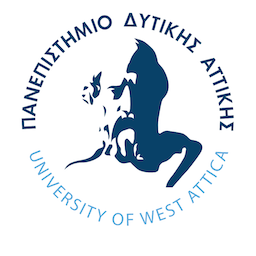Publications

2021 |
Atsidakou, N.; Matsi, A. E.; Christakou, A. The effectiveness of exercise program after lumbar discectomy surgery Journal Article In: J Clin Orthop Trauma, vol. 16, pp. 99-105, 2021. Abstract | Links | BibTeX | Tags: disability, discectomy, exercise, pain, quality of life, strength @article{,A lumbar herniation disc appears as a major cause of lumbar pain and sciatica. The purpose of the present systematic review is to examine the effectiveness of such exercise programs on pain, disability, quality of life, strength and the assessed time required to return to work/normal activities after undergoing lumbar discectomy surgery. PubMed, MEDLINE, and Google Scholar were used for the selection of randomized controlled trials (RCTs). The PEDro scale was chosen to assess the methodological quality of the included studies. Seven RCTS met the inclusion criteria. According to the evaluation of the PEDro scale, one was considered as « high quality», five as « moderate quality» and one as « low quality». The mean score of the studies was 5.14. The results showed that after such exercise there was an improvement in pain, disability, quality of life, muscle strength and in time required to return to work. The exercise programs have a positive impact on the reduction of pain, disability, time required to return to work/normal activities as well as an increase in quality of life and muscle strength in patients with lumbar discectomy surgery. |
Karanasios, S.; Korakakis, V.; Whiteley, R.; Vasilogeorgis, I.; Woodbridge, S.; Gioftsos, G. In: Br J Sports Med, vol. 55, no. 9, pp. 477-485, 2021. Abstract | Links | BibTeX | Tags: elbow, exercise, tendinopathy @article{Karanasios2021b,Objective: To evaluate the effectiveness of exercise compared with other conservative interventions in the management of lateral elbow tendinopathy (LET) on pain and function. Design Systematic review and meta-analysis. Methods: We used the Cochrane risk-of-bias tool 2 for randomised controlled trials (RCTs) to assess risk of bias and the Grading of Recommendations Assessment, Development and Evaluation methodology to grade the certainty of evidence. Self-perceived improvement, pain intensity, pain-free grip strength (PFGS) and elbow disability were used as primary outcome measures. Eligibility criteria RCTs assessing the effectiveness of exercise alone or as an additive intervention compared with passive interventions, wait-and-see or injections in patients with LET. Results: 30 RCTs (2123 participants, 5 comparator interventions) were identified. Exercise outperformed (low certainty) corticosteroid injections in all outcomes at all time points except short-term pain reduction. Clinically significant differences were found in PFGS at short-term (mean difference (MD): 12.15, (95% CI) 1.69 to 22.6), mid-term (MD: 22.45, 95% CI 3.63 to 41.3) and long-term follow-up (MD: 18, 95% CI 11.17 to 24.84). Statistically significant differences (very low certainty) for exercise compared with wait-and-see were found only in self-perceived improvement at short-term, pain reduction and elbow disability at short-term and long-term follow-up. Substantial heterogeneity in descriptions of equipment, load, duration and frequency of exercise programmes were evident. Conclusions: Low and very low certainty evidence suggests exercise is effective compared with passive interventions with or without invasive treatment in LET, but the effect is small. |
Tsekoura, M.; Stasi, S.; Gliatis, J.; Sakellari, V. Methodology of a home-based motor control exercise and ergonomic intervention programme for community-dwelling older people: The McHeELP study Journal Article In: J Frailty Sarcopenia Falls, vol. 15, 2021. Abstract | Links | BibTeX | Tags: exercise, falls, home modification, lower extremities, motor control @article{Tsekoura2021,The aim of this research (Motor control Home ergonomics Elderlies' Prevention of falls; McHeELP study) was to develop a novel intervention combining motor control home-based exercises and a home ergonomic safety-improvement strategy in order to reduce falls in frail ambulatory older adults. A randomized controlled trial of a novel intervention is proposed including motor control exercises and home ergonomic assessment and modification in older adults who have at least one fall experience. Participants are randomized to control or intervention group in a 1:1 ratio. Participants will be assessed three times: at baseline, at 3rd month (end of intervention period) and again at 6th month (follow-up measurement). The primary outcome is of the effect on functional mobility using the Timed Up and Go test. Secondary outcomes include assessments of functionality, fear of falling and quality of life. This will be the first study to develop an exercise intervention approach that combines home-based motor control exercise intervention with home assessment and modification. This study is expected to explore a low-cost, easy-to-popularize, and effective exercise intervention approach for improving functional mobility and prevent falls among older adults. |
Tsekoura, M.; Stasi, S.; Gliatis, J.; Sakellari, V. Prescription of exercise for older adults recommendations for clinical practice Journal Article In: Arch Hellenic Med, vol. 38, no. 1, pp. 12-17, 2021, ISSN: 11-05-3992. Abstract | Links | BibTeX | Tags: clinical practice, exercise, older adults, prescription @article{Tsekoura2021b,Regular exercise and general daily activity provide substantial health benefits, improve quality of life and increase functionality in older adults. Elderly people often do not benefit fully from exercise prescription, however, because they receive vague or inappropriate instructions. This paper reviews the components of exercise prescription and the approaches to developing appropriate exercise prescription for older persons, which should be multi-component, including aerobic, muscle strengthening, balance and flexibility training. The elderly should be encouraged to participate in therapeutic exercise programs as primary or adjunctive therapy in the treatment of various chronic diseases associated with aging. |
2020 |
Hayden, J. A.; Wilson, M. N.; Stewart, S.; Cartwright, J. L.; Smith, A. O.; Riley, R. D.; van Tulder, M.; Bendix, T.; Cecchi, F.; Costa, L. O. P.; Dufour, N.; Ferreira, M. L.; Foster, N. E.; Gudavalli, M. R.; Hartvigsen, J.; Helmhout, P.; Kool, J.; Koumantakis, G. A.; Kovacs, F. M.; Kuukkanen, T.; Long, A.; Macedo, L. G.; Machado, L. A. C.; Maher, C. G.; Mehling, W.; Morone, G.; Peterson, T.; Rasmussen-Barr, E.; Ryan, C. G.; Sjögren, T.; Smeets, R.; Staal, J. B.; Unsgaard-Tøndel, M.; Wajswelner, H.; Yeung, E. W.; Group, C. L. B. P. I. M. -A. In: Br J Sports Med, vol. 54, no. 21, pp. 1277-1278, 2020. Abstract | Links | BibTeX | Tags: chronic, exercise, low back pain, participants, physiotherapy @article{Hayden2020,Background: Low back pain is one of the leading causes of disability worldwide. Exercise therapy is widely recommended to treat persistent non-specific low back pain. While evidence suggests exercise is, on average, moderately effective, there remains uncertainty about which individuals might benefit the most from exercise. Methods: In parallel with a Cochrane review update, we requested individual participant data (IPD) from high-quality randomised clinical trials of adults with our two primary outcomes of interest, pain and functional limitations, and calculated global recovery. We compiled a master data set including baseline participant characteristics, exercise and comparison characteristics, and outcomes at short-term, moderate-term and long-term follow-up. We conducted descriptive analyses and one-stage IPD meta-analysis using multilevel mixed-effects regression of the overall treatment effect and prespecified potential treatment effect modifiers. Results: We received IPD for 27 trials (3514 participants). For studies included in this analysis, compared with no treatment/usual care, exercise therapy on average reduced pain (mean effect/100 (95% CI) −10.7 (−14.1 to –7.4)), a result compatible with a clinically important 20% smallest worthwhile effect. Exercise therapy reduced functional limitations with a clinically important 23% improvement (mean effect/100 (95% CI) −10.2 (−13.2 to –7.3)) at short-term follow-up. Not having heavy physical demands at work and medication use for low back pain were potential treatment effect modifiers—these were associated with superior exercise outcomes relative to non-exercise comparisons. Lower body mass index was also associated with better outcomes in exercise compared with no treatment/usual care. This study was limited by inconsistent availability and measurement of participant characteristics. Conclusions: This study provides potentially useful information to help treat patients and design future studies of exercise interventions that are better matched to specific subgroups. |
Mitsiou, G.; Karatzanos, E.; Smilios, I.; Psarra, K.; Patsaki, I.; Douda, H. T.; Ntalianis, A.; Nanas, S.; Tokmakidis, S. P. Exercise promotes endothelial progenitor cell mobilization in patients with chronic heart failure Journal Article In: Eur J Prev Cardiol, 2020, (Online ahead of print). Abstract | Links | BibTeX | Tags: chronic heart failure, endothelial progenitor cells, exercise @article{Mitsiou2020,Regular exercise affects the vascular system, endothelial function, and facilitates microcirculation in patients with chronic heart failure (CHF). It promotes mobilization of endothelial progenitor cells (EPCs) into circulation which repair dysfunctional or injured endothelium and contribute to angiogenesis. Furthermore, haematopoietic progenitor cells (HPCs), a related cell population with progenitor-like properties, support regeneration and facilitate reparatory mechanisms in the vascular system. During exercise, using either a continuous or an interval training method, EPCs circulate into the bloodstream, ‘home to’ sites of ischaemic vascular injury and promote vascular regeneration. |

